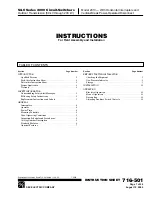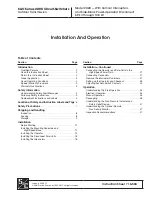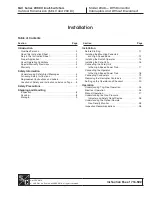
13
CHAPTER 4: Operation
• Under no line busy conditions, if an activation signal is detected on one of the
outputs, the switch stops scanning the rest of the outputs. It determines the
group number, and if it is different than the current group number, the switch
makes the appropriate connections. However, if a signal is not detected on any
of the 12 outputs, the switch returns to its default configuration.
• The 12 outputs are divided into four groups in the following manner:
Group 1: Outputs 1, 2, and 3
Group 2: Outputs 4, 5, and 6
Group 3: Outputs 7, 8, and 9
Group 4: Outputs 10, 11, and 12
• Group priority is defined in the following way*:
Group 1
➔
Group 2
➔
…Group 3
➔
Group 4
*Unless there’s a line busy indication in one of the groups, in which case that
group has the highest priority and cannot be switched away.
4.2 User Instructions
When the Autosensing ISDN Matrix Switch is powered, the LCD displays the
following:
OUTPUT:00 00 00
This indicates that all of the inputs are disconnected (none of the three inputs are
connected to any of the outputs).
To select a mode, press the appropriate number key (
,
, or
) on the
keypad. Pressing the
key displays the current mode setting.
By pressing the
key, the LCD displays:
MANUAL MODE?
By pressing the
key, the LCD displays:
1LINE AUTO MODE?
By pressing the
key, the LCD displays:
3LINE AUTO MODE?






































